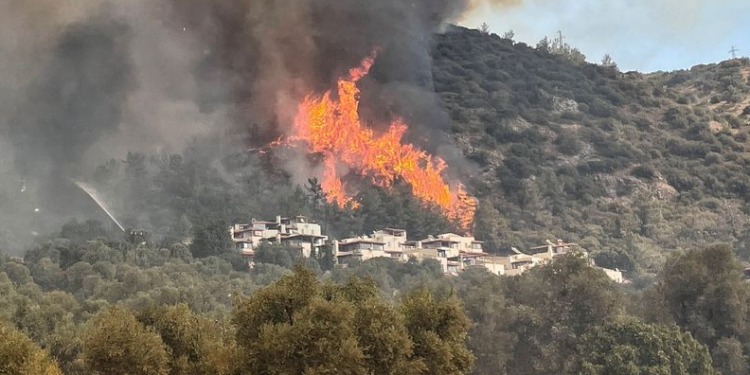by C. Morrison , Feb25, 2024 in TheDailySceptic
Writing in the Daily Telegraph last July, Suzanne Moore reported that the “world is on fire – and we can’t ignore it any longer”. She was noting the usual outbreaks of summer wildfires in southern Europe and suggested a retreat by cautious holiday makers in Rhodes away from one conflagration was “what climate refugees look like”. The Guardian was in similar hysterical mode observing that the lesson from Greece was “the climate crisis is coming for us all”. Such was the level of Thermogeddon interest last summer it is curious that final figures for areas burnt during the year are missing from mainstream media. In the five largest southern European countries for which the EU provides separate data – Portugal, Spain, France, Italy and Greece – 2023 was only the 20th highest in the modern satellite burnt acreage record going back to 1980.
This is perhaps not surprising. Fire ‘weather’ is a potent tool in stoking up general climate anxiety and helps promote the need for a collectivist Net Zero political solution. The Guardian used video footage of tourists moving away from one wildfire last year to claim “survival mode” could easily pass for a “TV climate crisis awareness raising campaign”. An Agence France-Presse report in the Guardian quoted EU spokesman Balazs Ujvari as stating that fires are getting more severe. “If you look at the figures every year in the past years, we are seeing trends which are not necessarily favourable.”
Let us look at some of the figures, starting first with the graph below compiled by the investigative climate writer Paul Homewood.
…
by J. Steele, Feb 24, 2024 in WUWT
Coral build reefs by producing limestone, or calcium carbonate. The great diversity of shell building mollusks, like clams and oysters, also build their shells out of calcium carbonate. So, scientists assumed that these organisms just pulled carbonate ions from the surrounding sea water and joined it with abundant calcium ions to make reefs and shells, a process referred to as “calcification”. Thus, many scientists then expressed their heart-felt concerns that more CO2 will reduce the ocean’s carbonate ions and thus stress coral reef building and mollusk shell building.
Indeed, the increasing absorption of human produced carbon dioxide by the oceans can very slightly lower pH. In other words, more CO2 increases the oceans’ concentration of H+ ions. It is also unassailable science that when CO2 enters the water, it interacts with water molecules to produce both H+ ions and bicarbonate ions. However, those H+ ions can then interact with carbonate ions and convert them to also form bicarbonate ions and reduce the pool of available carbonate ions. So, NOAA and hundreds of internet websites falsely told the world that “Ocean acidification slows the rate at which coral reefs generate calcium carbonate, thus slowing the growth of coral skeletons.”
However, climate scientists were apparently very ignorant regards the physiology of reef building and shell making. In order for charged ions to pass through an organism’s lipid membranes and enter its calcification chambers, a specialized channel or transporter is required. But for over a decade now, the search for carbonate transporters has failed to find any such transporters in any of these organisms. However, abundant bicarbonate transporters (green rectangles) have been found and deemed important for making reefs and shells.
…
…
La géologie, une science plus que passionnante … et diverse

